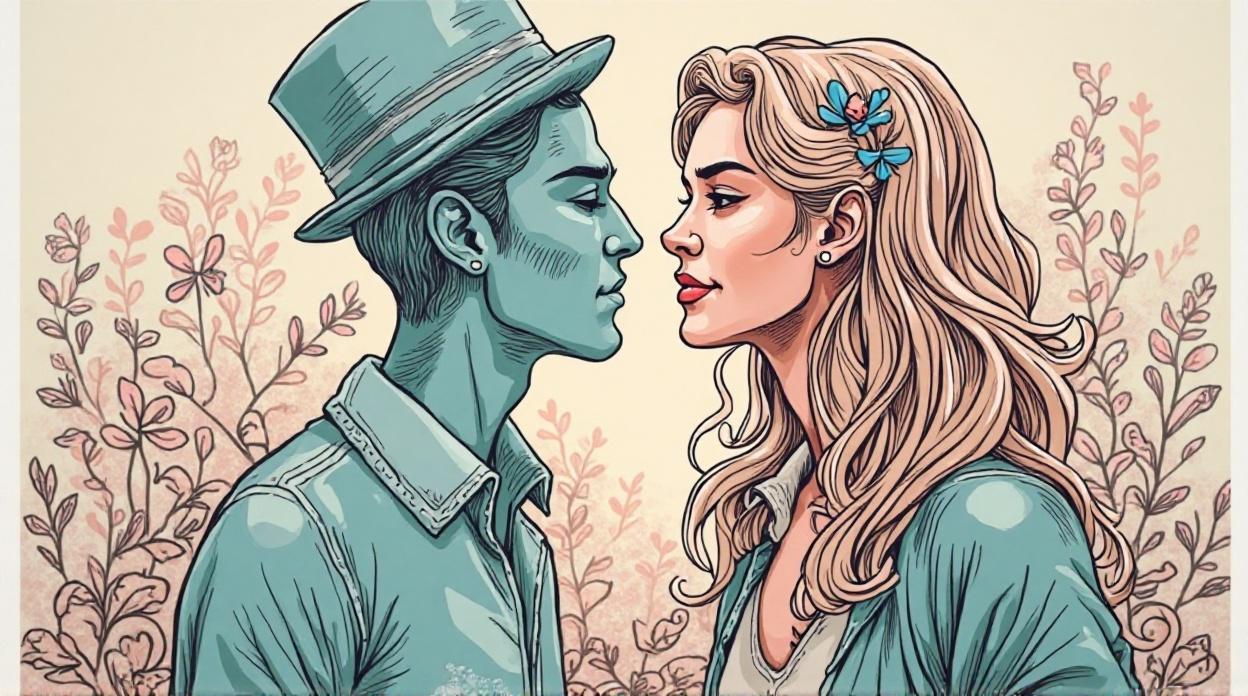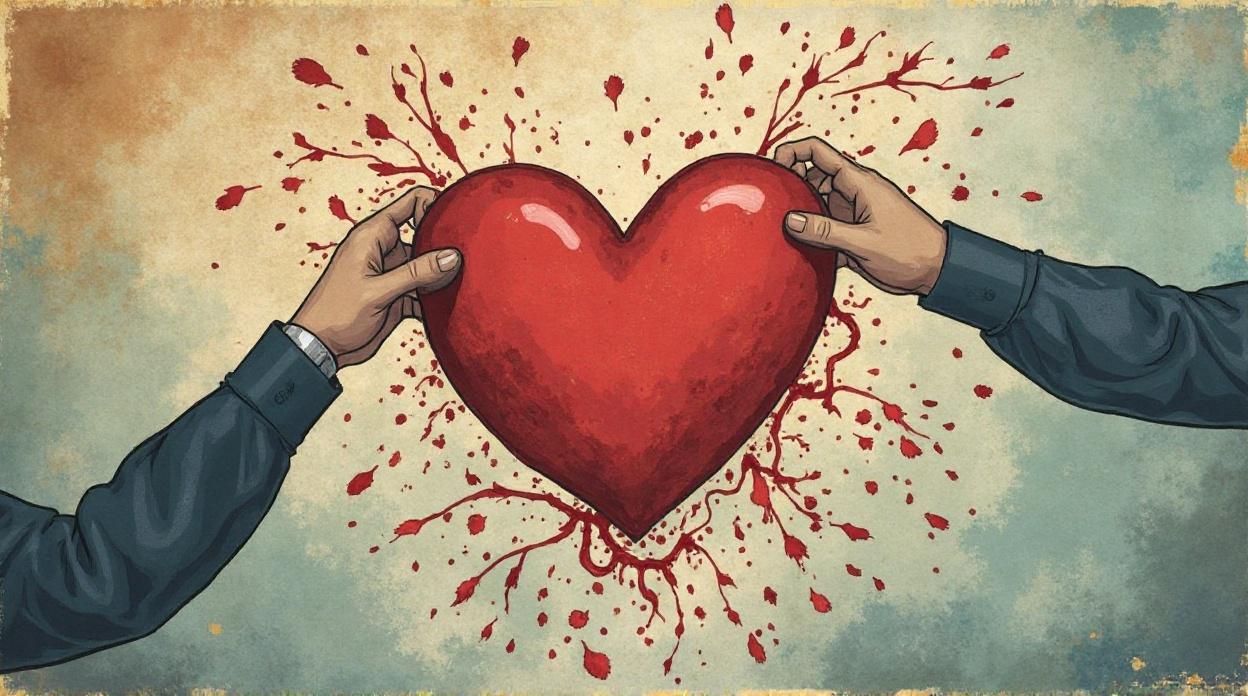I. Introduction: What Even IS This "Love" Thing, Anyway?
That flutter in your chest when they laugh. The quiet comfort of holding hands after a long day. Or perhaps the sharp pang of longing when they're gone. We've all been touched by it, haunted by it, propelled by it. But what is this elusive thing we call love?
Is it merely a pleasant sensation, a trick of the mind, a convenient label we've slapped onto a primal urge? Is it reducible to a set of chemical reactions, or does it reach beyond the tangible?
Prepare to question everything you thought you knew about love. We're embarking on a mind-bending journey through its history, its science, and even its potential future in a world increasingly intertwined with technology. It's a journey that will challenge, provoke, and, hopefully, expand your understanding of the human heart.

II. Love: Inside Your Brain, Body, and Beyond!
Let's begin our dissection – or should I say, embrace? – of love with the cold, hard facts (or, rather, the warm, fuzzy chemicals). Within the intricate folds of our brains, a veritable cocktail of neurotransmitters orchestrates the symphony of love. Dopamine, the notorious reward molecule, floods our system with a rush of pleasure, akin to a mild addiction. Oxytocin, the so-called "cuddle hormone," fosters feelings of attachment and bonding. And Serotonin, in lower doses, might explain the obsessive thoughts and fixations that often accompany new romance. It's a heady brew, a biological high that can leave us feeling euphoric and slightly unhinged.
But love isn't just about the initial rush. Psychologist Robert Sternberg proposed a triangular theory, suggesting that love is composed of three key ingredients: Intimacy, Passion, and Commitment. Mix these in different proportions, and you get a whole spectrum of experiences, from "Liking" (a comfortable intimacy, like a close friendship) to "Infatuation" (a fleeting blaze of passion, that "love at first sight" phenomenon) to the holy grail of "Consummate Love" (the perfect balance of all three).
These ingredients evolve through stages. The raw, biological imperative of Lust gives way to Attraction, the heady, intoxicating "honeymoon phase" fueled by hormones and infatuation. Finally, if we're lucky, we arrive at Attachment, that deep, comforting bond that provides security and stability. And let's not forget the shadow of our past. Attachment Theory suggests that our early childhood experiences shape our relational blueprints, subtly influencing how we seek and experience love as adults.
III. A Love Story Through Time: How We've Adored Across the Ages
To truly understand love, we must cast our gaze backward, tracing its evolution through the corridors of history. The ancient Greeks, those keen observers of the human condition, didn't see love as a monolithic entity. They distinguished between Eros (passionate, romantic love), Philia (deep friendship), Storge (familial affection), and Agape (selfless, unconditional love). Each had its place, its value, its own unique flavor.

Marriage, in those times, was less about romance and more about societal pragmatism – a business deal, a strategic alliance between families. The concept of "marrying for love" is, in the grand scheme of things, a relatively recent invention.
Fast forward to the age of knights and chivalry, and we find ourselves in the realm of "Courtly Love" – a world of unattainable ideals, unrequited longing, and elaborate rituals of courtship. The poetry! The drama! The sheer impracticality! This was love as a performance, a carefully constructed game where the pursuit often outweighed the prize.
The Enlightenment brought reason and individualism, slowly chipping away at the foundations of arranged marriages. The 19th century witnessed the rise of Romanticism, a cultural earthquake that prioritized emotion, passion, and the freedom to choose one's own partner. "Marry for love!" became the rallying cry, forever altering the landscape of relationships.
IV. Modern Love: Navigating the Digital Heartscape
Today, love exists in a globalized, interconnected world. Cultural norms dictate vastly different expressions of love. Public displays of affection, perfectly acceptable in some societies, remain taboo in others. Family influence on partner choice varies dramatically across cultures, with some societies still prioritizing familial approval over individual desire.
In the West, we've witnessed the rise of "Me-Love" – the radical notion that self-love is not narcissistic indulgence but a prerequisite for healthy relationships. Only when we are whole and secure within ourselves can we truly offer love to another.
And then there's the digital frontier. Dating apps have revolutionized the way we connect, offering a seemingly limitless buffet of potential partners. But this abundance can also lead to superficiality, a perpetual "grass-is-greener" mentality, and the dreaded "swiping fatigue."
V. The Great Love Debates: Why We Can't Agree on Anything
The very definition of love remains hotly contested. Is it a feeling, a fleeting sensation, a chemical reaction? Or is it a conscious choice, a deliberate act of commitment, a verb rather than a noun? Perhaps it's both, a messy entanglement of emotions and actions.

What is "true love," anyway? Is it a universal ideal, a sacred bond, or merely a social construct perpetuated by greeting card companies and Hollywood rom-coms?
Can you love more than one person? This question has vexed philosophers and relationship theorists for centuries, giving rise to discussions of polyamory and ethical non-monogamy.
The age-old debate rages on: Are we hardwired for love, driven by biological imperatives, or is it a learned behavior shaped by our cultural environment? Again, the answer likely lies in the gray area between nature and nurture. And finally, there's the ambiguity inherent in the phrase "I love you." What does it really mean? Is it a declaration of undying devotion, a casual expression of affection, or something in between?
VI. Love in 2050: What's Next for Our Hearts (and Robots)?
Looking ahead, the future of love promises to be even more complex, more technologically mediated, and perhaps, more unsettling. Could an AI ever truly love us?
Believe it or not, a significant portion of Gen Z is open to the idea of dating, even loving, an AI companion. The potential benefits are undeniable: emotional support, companionship, a buffer against loneliness. But the ethical questions loom large. What happens to human connection when we outsource our emotional needs to algorithms? Can an AI, devoid of consciousness and lived experience, ever truly reciprocate love? And what are the implications of creating "perfect" partners, designed to meet our every need?
Technology will continue to reshape the landscape of love. Smarter matchmaking algorithms promise to connect us with compatible partners. Virtual and augmented reality will enable immersive, long-distance dates. Relationship apps will offer personalized coaching and guidance.
Yet, we must also be wary of the pitfalls. "Technoference" – the intrusion of technology into our intimate moments – is a very real threat. Our phones, our screens, our endless notifications can steal our attention, diverting us from the very people we claim to love.
And what about love drugs and brain scans? Will we one day chemically enhance our feelings, optimizing our relationships with scientific precision? The ethical implications are staggering.
VII. Conclusion: The Ever-Evolving Heart
Love is, and will likely remain, a beautiful, bewildering mess. It's a complex interplay of biology, history, culture, and personal choice. It's an ever-evolving narrative, shaped by our individual experiences and the ever-changing world around us.

Despite all the technological advancements and societal shifts, the fundamental human need for connection, for affection, for belonging, endures.
So, how will you define love? How will you navigate its complexities, its contradictions, its infinite possibilities? How will your love story unfold in this wild, wonderful, and utterly confusing world? The choice, ultimately, is yours.
Leave a comment
Your email address will not be published. Required fields are marked *















